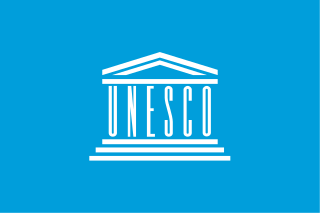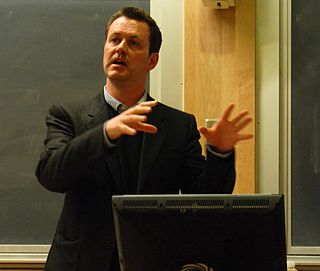
An endangered language or moribund language is a language that is at risk of disappearing as its speakers die out or shift to speaking other languages. Language loss occurs when the language has no more native speakers and becomes a "dead language". If no one can speak the language at all, it becomes an "extinct language". A dead language may still be studied through recordings or writings, but it is still dead or extinct unless there are fluent speakers. Although languages have always become extinct throughout human history, they are currently dying at an accelerated rate because of globalization, mass migration, cultural replacement, imperialism, neocolonialism and linguicide.
Angami is a Naga language spoken in the Naga Hills in the northeastern part of India, in Kohima district, Nagaland. In 2011, there is an estimate of 153,000 first language (L1) Angami speakers. Under the UNESCO's Language Vitality and Endangerment framework, Angami is at the level of "vulnerable", meaning that it is still spoken by most children, but "may be restricted to certain domains".
The Pacific and Regional Archive for Digital Sources in Endangered Cultures (PARADISEC) is a digital archive of records of some of the many small cultures and languages of the world. They digitise reel-to-reel field tapes, have a mass data store and use international standards for metadata description. PARADISEC is part of the worldwide community of language archives. PARADISEC's main motivation is to ensure that unique recordings of small languages are preserved for the future, and that researchers consider the future accessibility of their materials for other researchers, community members, or anyone who has an interest in such materials.

LACITO is a multidisciplinary research organisation, principally devoted to the study of cultures and languages of oral tradition.
Language documentation is a subfield of linguistics which aims to describe the grammar and use of human languages. It aims to provide a comprehensive record of the linguistic practices characteristic of a given speech community. Language documentation seeks to create as thorough a record as possible of the speech community for both posterity and language revitalization. This record can be public or private depending on the needs of the community and the purpose of the documentation. In practice, language documentation can range from solo linguistic anthropological fieldwork to the creation of vast online archives that contain dozens of different languages, such as FirstVoices or OLAC.

The UNESCO Atlas of the World's Languages in Danger was an online publication containing a comprehensive list of the world's endangered languages. It originally replaced the Red Book of Endangered Languages as a title in print after a brief period of overlap before being transferred to an online only publication.
Walmajarri is a Pama–Nyungan language spoken in the Kimberley region of Western Australia by the Walmadjari and related peoples.
Diyari or Dieri is an Australian Aboriginal language spoken by the Diyari people in the far north of South Australia, to the east of Lake Eyre. It was studied by German Lutheran missionaries who translated Christian works into the language in the late 19th and early 20th centuries, so that it developed an extensive written form. Only a few fluent speakers of Diyari remained by the early 21st century, but a dictionary and grammar of the language was produced by linguist Peter K. Austin, and there is a project under way to teach it in schools.

The Digital Himalaya project was established in December 2000 by Mark Turin, Alan Macfarlane, Sara Shneiderman, and Sarah Harrison. The project's principal goal is to collect and preserve historical multimedia materials relating to the Himalaya, such as photographs, recordings, and journals, and make those resources available over the internet and offline, on external storage media. The project team have digitized older ethnographic collections and data sets that were deteriorating in their analogue formats, so as to protect them from deterioration and make them available and accessible to originating communities in the Himalayan region and a global community of scholars.
The Pangloss Collection is a digital library whose objective is to store and facilitate access to audio recordings in endangered languages of the world. Developed by the LACITO centre of CNRS in Paris, the collection provides free online access to documents of connected, spontaneous speech, in otherwise little-documented languages of all continents.

Rutul is a language spoken by the Rutuls, an ethnic group living in Dagestan (Russia) and some parts of Azerbaijan. It is spoken by 30,000 people in Dagestan and 17,000 in Azerbaijan. The word Rutul derives from the name of a Dagestani village where speakers of this language make up the majority.

Language preservation is the preservation of endangered or dead languages. With language death, studies in linguistics, anthropology, prehistory and psychology lose diversity. As history is remembered with the help of historic preservation, language preservation maintains dying or dead languages for future studies in such fields. Organizations such as 7000 Languages and the Living Tongues Institute for Endangered Languages document and teach endangered languages as a way of preserving languages. Sometimes parts of languages are preserved in museums, such as tablets containing Cuneiform writing from Mesopotamia. Additionally, dictionaries have been published to help keep record of languages, such as the Kalapuya dictionary published by the Siletz tribe in Oregon.

Mark Turin is a British anthropologist, linguist and occasional radio broadcaster who specializes in the Himalayas and the Pacific Northwest. From 2014–2018, he served as Chair of the First Nations and Endangered Languages Program and Acting Co-Director of the Institute for Critical Indigenous Studies at the University of British Columbia in Vancouver. He is an Associate Professor at the University of British Columbia, cross-appointed between the Department of Anthropology and the Institute for Critical Indigenous Studies.

The National Anthropological Archives is a collection of historical and contemporary documents maintained by the Smithsonian Institution, which document the history of anthropology and the world's peoples and cultures. It is located in the Smithsonian's Museum Support Center in Suitland, Maryland, and is part of the Department of Anthropology at the National Museum of Natural History.
Shiwiar, also known as Achuar, Jivaro and Maina, is a Chicham language spoken along the Pastaza and Bobonaza rivers in Ecuador. Shiwiar is one of the thirteen indigenous languages of Ecuador. All of these indigenous languages are endangered.
Ngarla is a Pama–Nyungan language of coastal Western Australia. It is possibly mutually intelligible with Panyjima and Martuthunira, but the three are considered distinct languages.
Claire Louise Bowern is a linguist who works with Australian Indigenous languages. She is currently a professor of linguistics at Yale University, and has a secondary appointment in the department of anthropology at Yale.
HumanitiesDC, formerly known as the Humanities Council of Washington, DC, is an American non-profit affiliate of the National Endowment for the Humanities based in Washington, D.C. Humanities DC was founded in 1980 to fund and produce public humanities programming in the District of Columbia. It is one of 56 state humanities councils founded in the wake of the National Foundation on the Arts and Humanities Act of 1965.
Andrea Berez-Kroeker is a documentary linguist and professor in the Dept. of Linguistics at the University of Hawai'i-Manoa. She is the director of the Kaipuleohone archive of endangered languages. She is an expert on the practices of reproducibility and management of data in the field of linguistics.
Patience Louise "Pattie" Epps is an American linguistics professor and researcher at the University of Texas at Austin whose main research focus is on the Naduhup language family, which consists of four extant languages in the Amazon.








